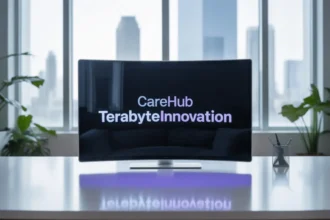In today’s fast-moving digital world, businesses can’t afford internal dissonance, especially between IT and business units. Yet, this misalignment remains one of the most persistent challenges organizations face. Governance, Risk, and Compliance (GRC) implementation provides a powerful, structured path to transform friction into functional synergy.
By integrating GRC frameworks across departments, businesses create a unified strategy that aligns technical capability with strategic vision.
The Disconnect Between IT and Business Objectives
When business and IT teams operate in isolation, even the most promising initiatives can spiral into costly failures. The challenge lies in communication gaps, mismatched priorities, and fragmented execution.
To truly understand why GRC is necessary, we need to examine the common points of friction that derail IT-business collaboration.
GRC Implementation
GRC doesn’t just patch process gaps, it restructures how business and IT teams engage, plan, and execute. It gives organizations a shared structure to manage governance, risk, and compliance holistically.
Let’s break down how this integration happens in practice, starting with the key building blocks of a collaborative GRC strategy.
Core Pillars of Collaborative GRC Implementation
Before diving into the tactical benefits, it’s essential to understand the foundational elements that enable grc software to function across departments. These pillars shape how organizations collaborate across technical and business domains.
1. Unified Governance Structure
Effective GRC begins with governance that includes voices from both domains. Cross-functional committees replace top-down mandates with shared accountability. Decision-making becomes transparent, expectations align, and both teams contribute to outcomes from the start.
Technology plays a crucial role here. Intuitive GRC platforms offer dashboards that translate technical data into actionable insights for business stakeholders, and vice versa. This visibility ensures both teams work from the same strategic playbook.
2. Integrated Risk Ownership
When risk becomes a shared concern, not an isolated IT responsibility, organizations gain a holistic view of vulnerabilities. IT gets context for its controls. Business leaders understand the technical implications of their choices. Together, they prioritize and manage risk with unified intent.
This integrated approach ensures that every strategic move, whether a new product launch or infrastructure upgrade, reflects a balance of innovation and protection.
3. Compliance as a Strategic Lever
In a well-structured GRC environment, compliance isn’t an obstacle, it’s an asset. By embedding regulatory requirements into the early stages of business planning and IT development, compliance becomes proactive and agile. It guides smarter processes, builds customer trust, and prevents costly retrofits or violations.
When compliance efforts are streamlined and automated across teams, they not only reduce friction but also free up energy for innovation.
What Effective GRC Collaboration Looks Like
Once these pillars are in place, the benefits start to compound. Businesses move faster, innovate smarter, and manage risk with greater precision. Here’s how those benefits show up in day-to-day operations when GRC collaboration is fully embraced.
Strategic Alignment
When GRC guides both IT and business, every initiative is evaluated against clearly defined business goals. Instead of disjointed projects, teams pursue outcomes that matter, on time, within scope, and with clear strategic relevance.
Decision-Making Without Delays
By establishing decision rights and workflow transparency, GRC frameworks eliminate bottlenecks. Teams know who owns what, what the approval process looks like, and how to move projects forward efficiently.
Shared Risk Intelligence
GRC breaks down the language barrier around risk. Business teams can interpret technical issues in terms of business impact. IT teams gain clarity on what’s mission-critical. Together, they form a coordinated response that protects operations and reputation alike.
Enabling Collaboration Through GRC Technology
Technology isn’t just a support layer, it’s the enabler of real-time visibility, process consistency, and cross-team transparency. Let’s explore the specific capabilities modern GRC tools bring to the table to support this level of collaboration.
Unified Dashboards
GRC platforms consolidate technical and strategic data into role-based dashboards. These dashboards provide business leaders with clarity on IT decisions, while giving IT teams insight into organizational priorities.
Automated Workflows
Workflows reduce the back-and-forth between departments by routing tasks, approvals, and escalations automatically, minimizing delays and enhancing accountability.
Integrated Reporting
Rather than juggling spreadsheets across departments, integrated reporting provides a single source of truth. It becomes easier for both teams to make informed, coordinated decisions.
AI-Driven Analytics
Advanced platforms incorporate AI to detect risks early, flag inefficiencies, and recommend action points. These insights improve team coordination and help anticipate problems before they escalate.
A Roadmap to Collaborative GRC Success
Knowing the theory is one thing bringing GRC to life requires a structured, step-by-step approach. Here’s how organizations can roll out a GRC strategy that unites IT and business from planning through to execution.
1. Align on Pain Points
Start with honest conversations between IT and business leaders. Identify where disconnects are hurting performance, and what alignment would look like in practice. Define what success means from both sides.
2. Choose Tools That Enable Connection
When selecting GRC solutions, prioritize usability and integration. The right tool should bring clarity and accessibility for all users, not just technical experts.
3. Redesign for Inclusion
Rethink core processes to include both IT and business inputs. Build mutual understanding through targeted training and team workshops that highlight how each side works, speaks, and thinks.
4. Create a Feedback Loop
Make collaboration a continuous process. Establish checkpoints, gather feedback, and adjust workflows to reflect evolving needs. Celebrate cross-functional wins to reinforce the benefits of working together.
Measuring What Matters
A strong GRC implementation isn’t judged only by checkboxes, it’s measured by how effectively teams collaborate and deliver results.
Here are key performance indicators that reveal how well your GRC-driven alignment is working.
- Fewer miscommunications during compliance reviews
- Shorter project cycles due to faster approvals
- Faster incident resolution due to shared awareness
- Increased stakeholder satisfaction across departments
- Fewer duplicated or conflicting compliance efforts
Conclusion
In a world where complexity is the norm, GRC isn’t just a framework, it’s your edge. GRC implementation does more than streamline compliance, it transforms the way organizations think, build, and execute. When IT and business operate as true partners, they don’t just avoid risk, they uncover new value. They make better decisions faster, innovate with confidence, and stay resilient through change.
FAQs
1. How to increase business value with the IT GRC program?
To optimize and scale your GRC program:
1) Enhance GRC processes with automation
2) Foster a culture of compliance and security awareness
3) Leverage data analytics for insightful GRC decision-making
4) Manage third-party risks in a scalable manner
5) Measure and communicate the value of GRC to stakeholders consistently.
2. What are the benefits of GRC implementation?
The three primary benefits of implementing a GRC management tool are transparency, efficiency, and accountability. A modern GRC management solution offers organizations a customizable platform that can easily integrate with existing technology stacks while remaining user-friendly, making compliance and risk management more effective across departments.
3. Why is GRC important in business?
A GRC framework provides a model for managing governance and compliance risk throughout your company. It involves identifying key policies that drive organizational goals. By adopting a GRC framework, you take a proactive approach to mitigating risks, making well-informed decisions, and ensuring business continuity, all critical elements for sustainable business success.

















